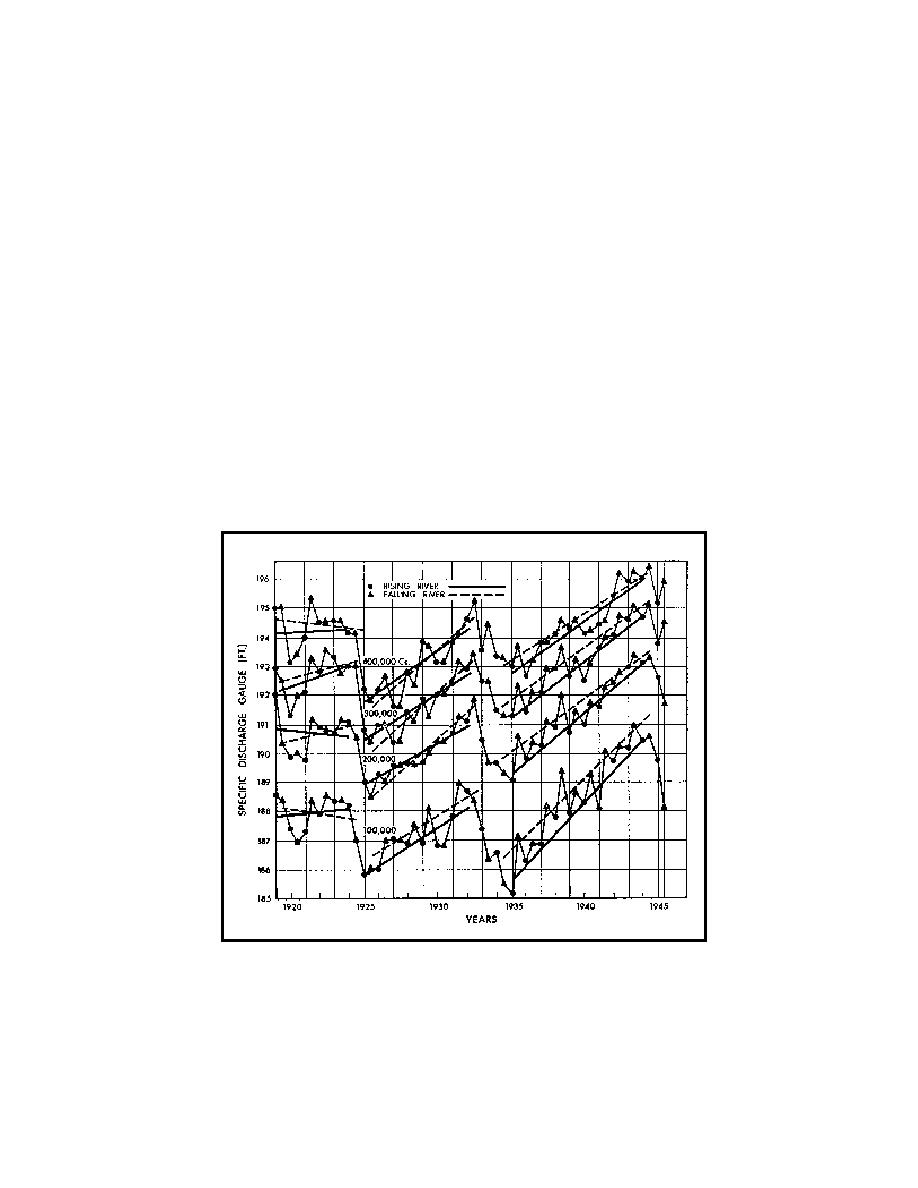
Fundamentals of Engineering Design
in the bed elevation of a stream. Therefore, specific gage records are associated with the changes in the
bed elevation. However, a specific gage record charts the change in the stage of the water surface for a
given discharge through time, and does not necessarily reflect the behavior of the bed of the river. While
it is true that in many cases, the lowering or raising of stages is a result of changes in the bed elevation, there
are other factors other than the bed elevation that can affect the water surface stage. For this reason, one
must be careful when assuming that the specific gage records reflects the behavior of the stream bed.
Specific gage records are often used to illustrate the response of a river to various alterations in the
channel or watershed. Inglis (1949) used specific gage records to document the response of the Indus
River downstream of the Lloyd Barrage (Figure 5.9). Inglis used a slight variation of the procedure
described by defining the specific gage record based on rising and falling stages. According to Blench
(1966):
The object of these curves was to show the relatively sudden regime changes due to
barrage construction and later extension, each followed by a relatively slow trend
(or secular change of regime) towards a new steady regime at a higher elevation
than originally, due to sediment exclusion from the canals and reduced river flow.
Figure 5.9 Specific Gage Record, Indus River Downstream of
Sukkar Barrage (after Inglis, 1949)
Another example of the response of a river to the construction of a dam is illustrated in Figure 5.10
which shows the specific gage curves below the Trimmu Barrage, India (Galay, 1983). The specific gage
128



 Previous Page
Previous Page
